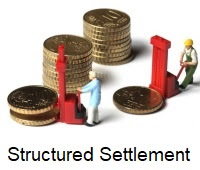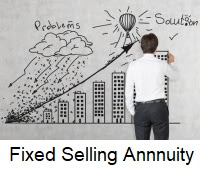Nuclear waste history(1)
Since its birth the nuclear industry seems to have swum in troubled waters. Effort to explain barely reassure the world's population. A recent EU survey shows that 75% of Europeans distrust the nuclear industry. The root of this distrust: the fear of radioactive waste. So let's talk about it. Part of the seabed are littered with gutted radioactive barrels. What exactly did they contain? The most dangerous waste is inside nuclear reactors. To feed a power plant, cells of uranium, a radioactive mineral, are placed in the reactor core. Uranium is the plant's fuel. Inside the cells, the uranium reacts resulting in nuclear fission. Uranium atoms project particles called neutrons which hit other atoms and break them, releasing extremely high energy. The uranium cells heat up, the reactor boils water and the turbines produce electricity. After a few years, the cells are spent and must be changed. They are removed and placed in pools where they cool down over time. They have become nuclear waste. Inside the cells, new elements appear, like gases and metals, which have strange names: plutonium, caesium, americium, krypton, among others. Their life-cycle lasts from milliseconds to millions of years.Radioactive waste is dangerous and must be isolated. All that enters into contact with it is contaminated. The uranium cell are waste but so is all that touches them: water, liquids, buildings and worker's clothing.
We set off on a world wide quest to find out how the military and industry manage nuclear waste and if it's a risk for people everywhere. It's at the HQ of Greenpeace, the world's biggest anti-nuclear group, that our investigation begins. It was they who filmed the gutted barrels on the seabed. They let us into their treasure trove: the video archive. Mike tomsley is a veteran of every campaign against radioactive waste at sea. We went to a very deep part of the channel called the Casquets Trench, near the Channel Islands, in a fishery and near beaches. Rusty old barrels of nuclear waste. Empty waste barrels! In the empty barrels, marine wildlife had taken up residence. The question is: what happened to the radioactive waste? It's gone into the environment. So you can see what happens. It's hasn't disappeared into a black hole in the seabed. It pollutes the sea, gets into the food chain, and that could bring it back to your dinner plate.
Are the radioactive particles that enter the food chain dangerous? Radioactivity is radiation that can enter the body. Man is constantly exposed to weak, natural radioactivity, for example when taking a plane or walking in granitic areas. Man is more exposed after an atom bomb blast or by standing close to a radioactive source:irradiation. But he could also taken in radioactive food, water, gasses and dust. The irradiating particles become attached to the organs: contamination. Radioactive radiation is like an electron bombardment. They enter the body and break DNA strings. If the radiation is weak, the body can sometimes repair its DNA. But after strong radiation, it cannot. The broken molecules can cause digesttive or cardiovascular diseases, or more seriously cancer and genetic anomalies.
All dumping of radioactive particles in the environment can harm us. Was it common practice? Everybody did it : British, French, Americans, Russians, Japanese...The whole nuclear industry pumped its discharge into the sea. It was a time when everybody had no regard. The sea was thought of as the world's biggest dustbin. Figures from the International Atomic Energy Agency: in under 50 years, nuclear-capacity countries have dumped over 100,000 tons of waste into the seas. Britain alone accounts for 80% of the total. And landlocked Switzerland is second on the list. Faced with radioactive pollution, many nations oppose duping at sea, thus backing environmental groups. The impact helped us win an important battle. But it took another 10 years foe us to win the war. We managed to stop the dumping of radioactive waste at sea from ships.
In 1993, a UN treaty finally put and end to the submerging of nuclear waste. France was the last country to sign the treaty. It was a victory for the protection of the environment. But many grey areas still exist in nuclear waste management. Nuclear was developed by the military and little is known about their waste. Much information is protected by offcial secrets acts. We heard to the first ever nuclear site in search of the first ever nuclear waste. In 1942, during World War 2, the Roosevelt government chose Hanford as its nuclear weapons site and the Manhattan Project. Built deep in the desert, Hanford became a city of barracks and caravans inhibited by 51,000 people. Nine nuclear reactors and five plutonium plants were hastily built. Today historical Hanford is like a wasteland surrounded by barriers. The fuel elements caused a lot of contamination to come into this river. Were local inhabitants aware of this? Of course not. It was a secret covered by the Manhattan Project and by the US Army operation. The bed of the Columbia river contains radioactive sediment that no one knows how to remove as it keeps contaminating the water.
But even more shocking is this people. Those in charge of the Hanford site allowed families to enjoy the river without informing them of the dangers. Alan Boldt lives in Richmond a few kilometers from the site. He was a nuclear engineer. He said "I came to Hanford in 1963. I was 21 and had just graduated college. I was young, believed in my superiors. Then I found out, that after following orders for about twenty years, what they had told me wasn't entirely the truth. Hanford was very not a good site because waste was expelled into the environment. I was rather shocked by the high level of chemical products. In 20 years, they built it and made a mess."
Nuclear waste history(2)
Nuclear waste history(3)
Nuclear waste history(4)
Nuclear waste history(5)
Nuclear waste history(6)
Nuclear waste history(7)
Beginner's Cryptocurrencies
Track Cryptocurrencies
Make Money i.e.
Get Cryptocurrencies
Initial Coin Offering
Asset Invest Cryptocurrencies
Drawbacks Cryptocurrencies
Future Cryptocurrency
Cryptocurrency FAQ
Performing Cryptocurrencies
Best Altcoins 2025
Bitcoin Overview 2025
Ethereum Overview 2025
Solana Overview 2025
Ripple Overview 2025
Cardano Overview 2025
Polygon Overview 2025
Chainlink Overview 2025
Polkadot Overview 2025
Avalanche Overview 2025
Helium Overview 2025
Blockchain Trends 2025
Decentralized Finance
Metaverse Cryptocurrency
Satoshi Nakamoto Cryptocurrency
Jeff Bezos Cryptocurrency
Famous With Cryptocurrency
Changpeng Zhao Cryptocurrency
ICO Cryptocurrency
Emerging Meme Coins
Pepe Unchained ($PEPU)
Trend 2025 Cryptocurenncy
Making Sense Bitcoin Boom
Cryptocurrency Trend 2025
Fiat Currency
Non-Fungible Token (NFT)
Cryptocurrency Risks
สมัครสมาชิก:
ส่งความคิดเห็น (Atom)
#Romance Manga การ์ตูนผู้หญิง 006
การ์ตูนโรแมนติก The Substitute Fiancee เจนน่า น้องสาวฝาแฝดของเจสซี่ จะแต่งงานในอีกสัปดาห์ข้างหน้า และเธอก็หนีงาน! เธอขอร้องให้เจสซี่มาแท...

-
การ์ตูน PDF แคปรูปส่งมาได้เลยที่ ไลน์ไอดี fattycatty หรือ อีเมล richyamazon@gmail.com คลิกแต่ละเล่มมีตัวอย่างตอนข้างในให้ดูนะคะ ...
-
ขายการ์ตูนออนไลน์ PDF อ่านบนมือถือ รวม การ์ตูนโรแมนติก ชุด 1 การ์ตูนแนวโรแมนติก 40 เล่ม ราคา 400 บาท แต่ละเล่มมีประมาณ 3 ตอน สั่งครั้งแรกติด...
-
การ์ตูนโรแมนติก The Substitute Fiancee เจนน่า น้องสาวฝาแฝดของเจสซี่ จะแต่งงานในอีกสัปดาห์ข้างหน้า และเธอก็หนีงาน! เธอขอร้องให้เจสซี่มาแท...







































ไม่มีความคิดเห็น:
แสดงความคิดเห็น